
Find Help
More Items From Ergsy search
-

What advancements have been made in understanding the bubonic plague?
Relevance: 100%
-

What is Bubonic Plague?
Relevance: 85%
-

What is the bubonic plague?
Relevance: 78%
-

Are there vaccines for the bubonic plague?
Relevance: 75%
-

Can the bubonic plague be prevented?
Relevance: 75%
-

How is the bubonic plague transmitted?
Relevance: 74%
-

How was the bubonic plague controlled historically?
Relevance: 73%
-
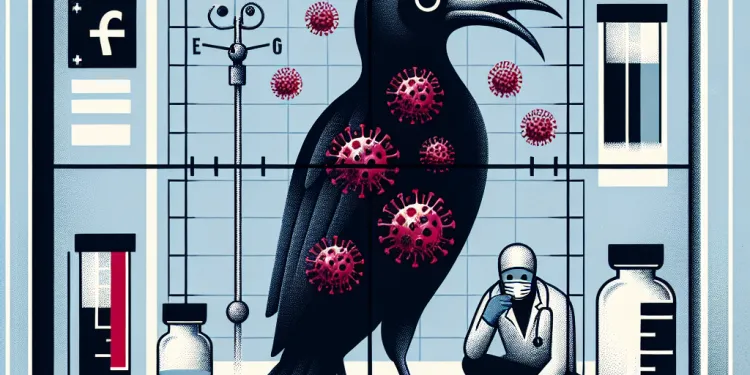
What are the symptoms of the bubonic plague?
Relevance: 73%
-

Is the bubonic plague contagious between humans?
Relevance: 72%
-

How can the bubonic plague be treated?
Relevance: 71%
-
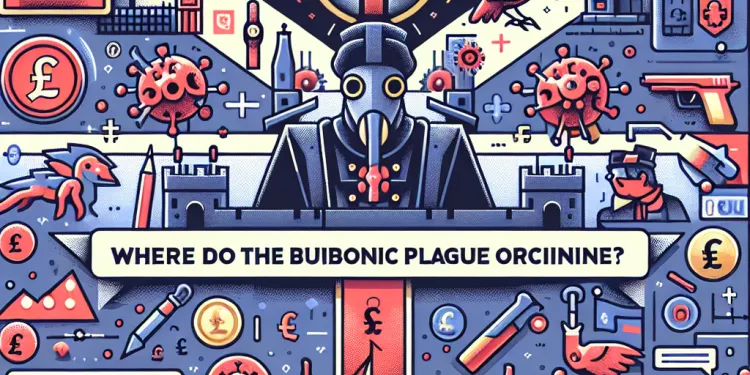
Where did the bubonic plague originate?
Relevance: 71%
-

What is the mortality rate of untreated bubonic plague?
Relevance: 69%
-

Did the bubonic plague affect only Europe?
Relevance: 69%
-
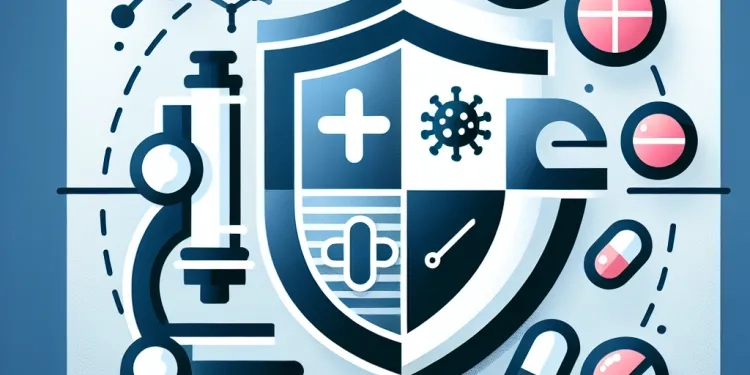
Can the bubonic plague become resistant to antibiotics?
Relevance: 67%
-
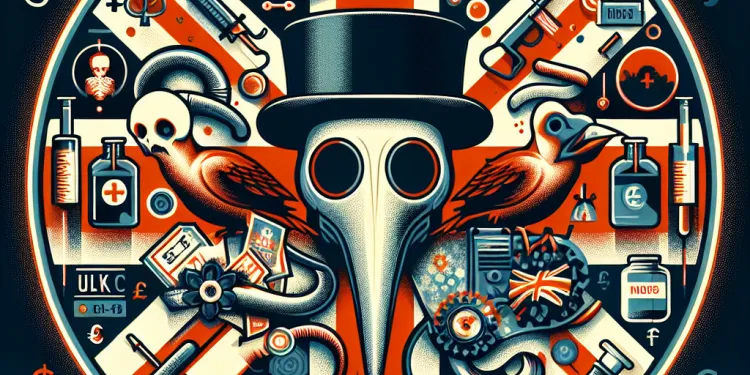
What historical event is the bubonic plague known for?
Relevance: 66%
-

Are there modern outbreaks of bubonic plague?
Relevance: 52%
-
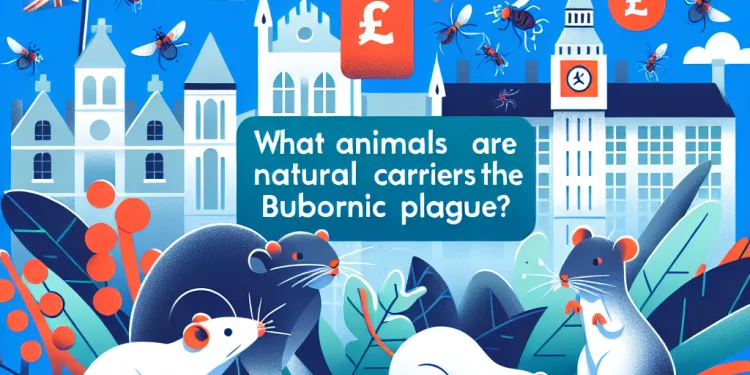
What animals are natural carriers of the bubonic plague?
Relevance: 48%
-

What is a bubo?
Relevance: 35%
-

What public health measures are important for managing the plague?
Relevance: 34%
-

Is the bubonic plague still a global health threat?
Relevance: 27%
-

How can I advance my career as a primary care support worker?
Relevance: 24%
-

Planning Your Funeral in Advance? | Expert Tips from Celebrants
Relevance: 22%
-

What advancements have been made in stoma bag technology?
Relevance: 22%
-

Advancements in Mental Health Resources for Families
Relevance: 22%
-

What is an advance payment of Universal Credit?
Relevance: 21%
-

Why is understanding the terms of car finance important?
Relevance: 19%
-

Understanding Facial Palsy
Relevance: 17%
-

Understanding Mental Health in Children
Relevance: 17%
-

Understanding the Benefits of the Mediterranean Diet
Relevance: 17%
-

Understanding Your Rights in Divorce Proceedings
Relevance: 15%
-

Understanding and Managing Respiratory Illnesses in Families
Relevance: 15%
-
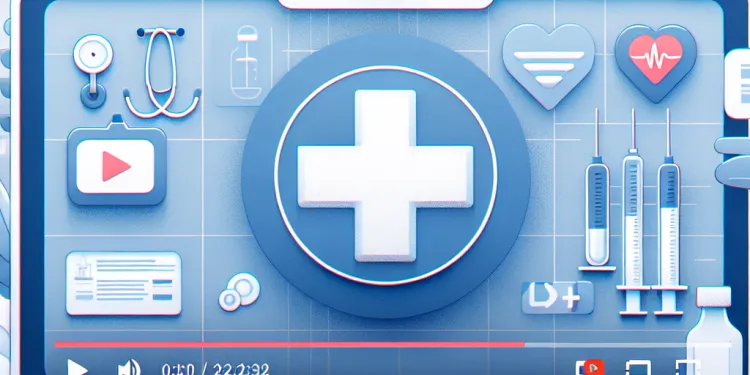
Understanding the NHS: How to Access Services
Relevance: 15%
-

Understanding the New Domestic Abuse Laws in the UK
Relevance: 15%
-
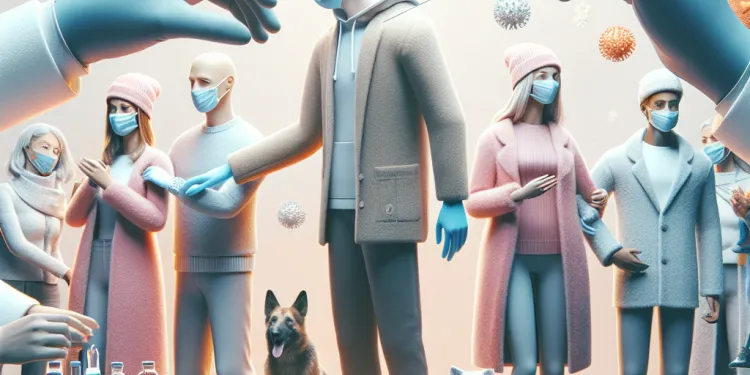
Understanding Seasonal Flu: Prevention and Treatment
Relevance: 15%
-

Understanding Your Sexual Health - Herpes
Relevance: 15%
-
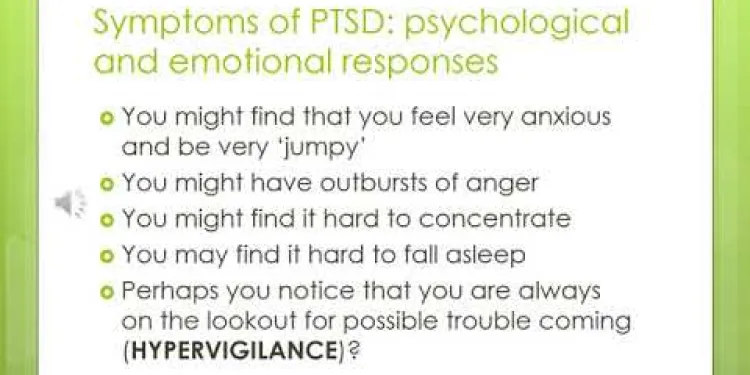
Understanding and Managing PTSD powerpoint slides with audio
Relevance: 15%
-

Understanding Your Rights During Divorce Proceedings in the UK
Relevance: 14%
-

Understanding Your Sexual Health - Gonorrhoea
Relevance: 14%
-

Part One: Understanding Osteoarthritis- MSK Physiotherapy
Relevance: 14%
-

Understanding Your Sexual Health - Genital Warts
Relevance: 14%
Introduction to the Bubonic Plague
The bubonic plague, often associated with the Black Death of the 14th century, has long been a subject of fear and fascination. This devastating pandemic drastically reduced populations across Europe, leading to profound societal changes. Over the centuries, our understanding of this deadly disease has significantly advanced, thanks to scientific and technological progress.
Scientific Discoveries in Plague Pathology
One of the most critical advancements in understanding the bubonic plague was identifying the bacterium responsible for the disease. Yersinia pestis was discovered in the late 19th century by Alexandre Yersin. This breakthrough laid the foundation for all subsequent research. Modern genetic studies have further deepened our understanding by allowing scientists to trace the evolution of Yersinia pestis, revealing how it adapted from a relatively benign gut bacterium in rodents to a deadly human pathogen.
Genomic Insights
Recent technological advancements in genomics have enabled researchers to extract and sequence DNA from skeletal remains of plague victims. These genomic studies have unraveled the genetic makeup of Yersinia pestis strains from various pandemics, offering insights into how the pathogen spread across regions and changed over time. Moreover, it has unveiled potential genetic factors in human populations that might have offered some resistance to the plague, helping shape European demographics.
Modern Epidemiology
Advances in epidemiology and bioinformatics have transformed our understanding of how the plague spreads. Research has clarified the role of fleas and rodents as vectors and reservoirs, respectively. Mathematical models incorporating historical climate data have suggested that changes in climate conditions significantly impacted plague outbreaks by influencing rodent populations. This understanding has improved the prediction and management of plague risks in endemic regions.
Treatment and Prevention
Treatment of the bubonic plague has greatly improved, with antibiotics such as streptomycin, gentamicin, and doxycycline being effective if administered early. Public health strategies, informed by a better understanding of transmission pathways, focus on reducing human contact with rodent hosts and their fleas. Surveillance programs and pest control are crucial components in preventing outbreaks in areas where the plague is still endemic.
Ongoing Research and Future Directions
Research continues to explore the complex history and biology of the bubonic plague. Efforts are underway to develop vaccines that could provide long-term protection against Yersinia pestis. The study of past pandemics informs global health strategies, offering valuable lessons for controlling infectious diseases. As scientific tools and techniques advance, our understanding of the bubonic plague continues to evolve, offering hope for better management and prevention of similar diseases.
Understanding the Bubonic Plague
The bubonic plague is a disease that makes people very sick. It is famous for causing the Black Death a long time ago, in the 1300s. Back then, many people in Europe got sick and died. This changed how people lived. Now, we know much more about the plague because of science and technology.
Learning About the Plague Germ
A big step in understanding the plague was finding the germ that makes people sick. This germ is called Yersinia pestis. A man named Alexandre Yersin found it over 100 years ago. Since then, scientists have learned a lot about this germ. It used to live in animals without causing problems but changed into something that can make people sick.
Studying Plague Germs with DNA
Today's technology lets scientists look at DNA from the bones of old plague victims. By doing this, they learn how Yersinia pestis has changed over time. They can see how it moved from place to place. Scientists also study if some people had special genes that helped them stay healthy, changing the people living in Europe today.
How the Plague Spreads
New studies show how the plague spreads from one place to another. Scientists know that fleas and rodents help spread the disease. They also learned that the weather can change how many rodents there are. This affects outbreaks of the plague. Knowing this helps scientists predict and control plague outbreaks in places where it still happens.
How We Treat and Stop the Plague
Today, we have medicine that can help people who get the plague, like antibiotics. To stop the plague, people should not come into contact with rodents and fleas that carry the disease. Programs that watch for the plague and control pests help stop it from spreading in areas where it still exists.
New Research on the Plague
Scientists are still studying the bubonic plague to learn more. They are trying to make vaccines to protect people from getting sick. By studying past outbreaks, scientists learn how to stop other diseases too. As technology gets better, we hope to manage and prevent diseases like the plague even more effectively.
Frequently Asked Questions
What is the bubonic plague?
The bubonic plague, caused by the bacterium Yersinia pestis, is a zoonotic infection that primarily affects rodents but can be transmitted to humans through flea bites.
How is the bubonic plague transmitted to humans?
The primary mode of transmission to humans is through bites from infected fleas, although contact with infected animals or respiratory droplets from an infected person can also spread the disease.
What advancements have been made in understanding the genetics of Yersinia pestis?
Researchers have sequenced the genome of Yersinia pestis, revealing insights into its virulence factors, evolution, and antibiotic resistance mechanisms.
How have advancements in archaeology contributed to plague research?
Archaeological studies have uncovered mass graves and DNA evidence that have contributed to knowledge about historical outbreaks and how the plague shaped human populations.
What role does climate play in the spread of the bubonic plague?
Studies suggest that climate conditions, such as temperature and rainfall, affect flea and rodent populations, influencing plague outbreaks.
Are there modern treatments available for the bubonic plague?
Yes, the bubonic plague can be effectively treated with antibiotics if diagnosed early. Modern medicine has significantly reduced mortality rates.
What impact have genomic studies had on plague understanding?
Genomic studies have helped trace the evolution of Yersinia pestis, enhancing understanding of its spread and mutation patterns over centuries.
What have we learned about the bubonic plague from dental pulp analysis?
Dental pulp analysis from ancient remains has provided direct evidence of Yersinia pestis DNA, helping to confirm past infections and study strain variations.
How are modern surveillance techniques aiding in plague detection?
Modern surveillance, including genetic testing and ecological monitoring, helps in early detection and control of plague outbreaks in endemic regions.
What have studies revealed about immune responses to the bubonic plague?
Research indicates that understanding how the human immune system responds to Yersinia pestis can inform vaccine development and therapeutic strategies.
How have interdisciplinary approaches advanced plague research?
Interdisciplinary approaches combining genetics, archaeology, and epidemiology have led to a more comprehensive understanding of the plague's history and impact.
What historical insights have recent studies uncovered about past plague pandemics?
Recent studies have clarified the timeline, spread, and societal impacts of historical plague pandemics, such as the Black Death.
What role do animal reservoirs play in the maintenance of Yersinia pestis?
Rodents and other small mammals serve as reservoirs for Yersinia pestis, maintaining the bacterium in nature and occasionally leading to human outbreaks.
Has research identified any potential vaccines for the bubonic plague?
Scientists are actively researching potential vaccines, with some promising candidates undergoing trials to test their efficacy and safety.
What technological advancements have aided in the detection of plague bacteria?
Advancements in rapid diagnostic tests and molecular techniques have improved the speed and accuracy of detecting Yersinia pestis in environmental and biological samples.
How have advancements in bioinformatics contributed to plague research?
Bioinformatics has enabled the analysis of large genetic datasets, improving understanding of Yersinia pestis's evolution, genetic diversity, and resistance traits.
What advancements have been made in the ecological study of fleas in plague research?
Recent ecological studies have increased understanding of flea population dynamics and their role in disease transmission, which is crucial for predicting and preventing outbreaks.
What have studies about the Black Death revealed about its global impacts?
Studies have shown that the Black Death had profound social, economic, and demographic impacts, reshaping societies and affecting human history significantly.
How do social factors influence the management and spread of the bubonic plague today?
Socioeconomic and cultural factors influence health infrastructure, public awareness, and responses to outbreaks, affecting disease management and control efforts.
What role does public health education play in controlling the bubonic plague?
Public health education enhances awareness about transmission risks and preventive measures, aiding in the early detection and treatment of the disease, thereby reducing outbreaks.
What is the bubonic plague?
The bubonic plague is a disease. It makes people very sick. It spreads through fleas and rats.
Symptoms include fever and painful, swollen places on the body. These are called "buboes."
To understand more, look at simple pictures or videos. Ask a teacher or family for help if needed.
The bubonic plague is a disease. Tiny germs called bacteria cause it. The full name of the germ is Yersinia pestis. This disease mostly makes rats and mice sick. But, people can get sick too if fleas bite them. Fleas are tiny insects that drink blood.
How do people catch the bubonic plague?
People can catch this illness from flea bites. Fleas with this illness bite and spread it. You can also get it from touching sick animals or from the air if a person with it coughs or sneezes near you.
What have scientists learned about the genes of Yersinia pestis?
Scientists are learning more about the genes of Yersinia pestis, which is a type of bacteria. Genes are like tiny instructions inside living things. They tell the bacteria how to grow and act.
Here are some tools that can help you:
- Look at pictures. Pictures can help you understand the information better.
- Ask someone to explain it to you. Sometimes talking about it can make it clearer.
- Use a dictionary for words you don't know.
Scientists have studied the DNA of a germ called Yersinia pestis. This germ can make people very sick. By studying it, scientists learn how it makes people sick, how it has changed over time, and how it fights medicine that tries to kill it.
How has new work in archaeology helped us learn about the plague?
Archaeology means studying old things people left behind. New ways of studying old things are helping us learn about the plague. The plague was a very bad sickness. It made a lot of people sick a long time ago. Tools and Techniques: - **Explore Pictures and Videos**: Look at images or videos about archaeology and the plague to better understand. - **Listen to Stories**: Ask someone to read or tell stories about people from the past. These can make learning easier and fun!Scientists who study old things have found big graves and DNA clues. These help us learn about big sicknesses long ago and how they changed people.
How does weather affect the spread of the bubonic plague?
Scientists think that the weather, like how hot or rainy it is, can change how many fleas and rats there are. This can make more people sick with the plague.
Is there a way to treat the bubonic plague today?
Yes, doctors can help people who have the bubonic plague. They use special medicine called antibiotics to make people better.
If you want to learn more, ask a doctor or look in books at the library.
Yes, we can treat the bubonic plague with medicine called antibiotics. It works best when we find the illness early. Doctors today are very good at making people better.
How have studies about genes helped us learn about the plague?
Scientists study genes to learn more about diseases like the plague.
This helps us know how the plague works and how it spread.
We can use pictures and videos to make it easier to learn.
Scientists looked at tiny parts inside Yersinia pestis. This tiny part is called a gene. By studying these genes, they learned how Yersinia pestis has changed and spread over time.
What did we find out about the Black Death from looking at teeth?
Scientists looked at old teeth to find a tiny germ called Yersinia pestis. This helped them learn about sicknesses from long ago. They can see how this germ changed over time.
How do new ways of watching help find plagues?
Today, scientists use special tools to watch for signs of the plague. They use things like genetic tests and watching nature closely. This helps them find plague outbreaks early and stop them quickly in places where the plague is common.
What have scientists found out about how our bodies fight the bubonic plague?
Scientists study how our bodies protect us from getting sick with the bubonic plague. This is called the immune response.
Here is what they learned:
- Our bodies have special defenders called "immune cells" that help fight the plague.
- Sometimes, the body remembers the plague and can fight it better if it comes back.
Here are some tips for understanding more:
- Use pictures and videos to understand better.
- Ask someone like a teacher or parent to explain things you don’t understand.
- Use simple words to describe what you learn to someone else. This can help you remember.
Scientists study how our body fights Yersinia pestis, the germ that causes the plague. This helps them make better medicines and vaccines to protect us.
How have different fields of study helped improve plague research?
People from different subject areas work together to learn more about the plague. This teamwork makes plague research better.
Here’s how it helps:
- Scientists share different ideas and skills.
- They find new ways to study and understand the plague.
- Working together, they make new discoveries faster.
Tools that can help with learning:
- Use simple word dictionaries.
- Try audiobooks to listen to information.
- Watch videos about the plague for visuals.
When scientists work together and use their knowledge in different areas like how living things work (genetics), old things and places (archaeology), and how diseases spread (epidemiology), they learn a lot about the plague. This helps us know more about what happened in the past and how the plague affected people.
Tools like pictures, videos, and simple charts can help make learning easier. Reading with a helper or using audiobooks can also be a big help.
What Have We Learned About Old Plagues From New Studies?
New studies help us learn more about how plagues spread in the past.
Plagues are diseases that made many people sick long ago.
These studies can tell us how people fought the diseases and what happened to them.
Using pictures and simple charts can help make the information clear.
New studies have helped us understand when and how the big sickness called the Black Death happened and spread. They also show how it changed people’s lives back then.
How do animals help keep Yersinia pestis alive?
Yersinia pestis is a germ. It can make people sick.
Animals, like rats and mice, can have this germ in their bodies. This helps the germ stay around.
If you want to understand this better, you can use picture books or videos. Talking with someone who knows about germs can also help.
Small animals like rats and mice can carry a germ called Yersinia pestis. This germ lives in these animals. Sometimes, it makes people sick.
Do we have any vaccines for the bubonic plague?
Scientists are working hard to find vaccines for the bubonic plague. A vaccine is a treatment that can protect people from getting sick.
Using simple language can help you understand this. You can also ask someone you trust if you want to know more.
Scientists are working hard to make new vaccines. Some look promising and are being tested to see if they work well and are safe.
What new inventions help find plague germs?
Today, scientists have new tools that make it easier to find plague germs. They use special machines and computers to look closely at tiny things. These machines help them see and understand germs better.
If you want more help with reading, you can use tools like text-to-speech apps. These apps can read words out loud for you. It's like having someone read the text to you.
New tests are better and faster at finding Yersinia pestis. This can help find the germ in the environment and in living things.
How has new computer technology helped with plague research?
Scientists use computers to study diseases like the plague. Computers help understand germs that cause the plague. They can find out how these germs change and spread. This helps scientists make better medicine and stop the disease.
Here are some tips that might help:
- Use simple language and break down hard words.
- Look for videos or pictures that explain the plague.
- Try using apps that read text out loud.
Bioinformatics helps scientists look at lots of genetic information. This helps them learn more about Yersinia pestis. They can see how it changes, how different it is, and how it fights against things that try to hurt it.
To understand this better, you can:
- Use pictures or diagrams to see how things are connected.
- Listen to the information with an audio tool.
- Ask questions or talk with someone about what you read.
What new things do we know about fleas when we study the plague?
Researchers have learned more about fleas and how they spread the plague. These tiny bugs can carry diseases. Studies help us understand how they do this.
You can use pictures or videos to see how fleas live and spread disease. You can also talk to someone who knows about animals and bugs to learn more.
Recent studies have helped us learn more about how fleas live and grow. This helps us understand how fleas spread diseases. By knowing this, we can stop diseases before they spread a lot.
What Did Studies Find Out About the Black Death Around the World?
Researchers studied the Black Death, a big sickness that happened a long time ago.
They wanted to know how the sickness affected people all over the world.
Here are some things that the studies found out:
- The Black Death made many people sick, and lots of people died.
- It changed how people lived and worked because so many got sick.
- Cities and towns looked different after the sickness because there were fewer people.
If you want to learn more, you can:
- Ask someone to read together.
- Look at pictures and videos about history.
The Black Death was a very bad sickness a long time ago. It changed the way people lived, worked, and how many people there were. It was a big part of history.
How do people in society affect how we manage and stop the spread of the bubonic plague today?
Social factors are things like how people live, work, and interact with each other.
These things can help us understand how the bubonic plague spreads and how we can manage it.
Here are some ways to make learning about this easier:
- Use simple words and sentences to describe what the bubonic plague is and how it spreads.
- Break information down into small parts. This makes it easier to understand.
- Use pictures or videos to show how diseases spread. Visuals can help make things clearer.
- Discuss real-life examples of how people have stopped the spread of diseases before.
- Ask questions to check understanding. This helps make sure everyone is on the same page.
Money, culture, and community can change how we keep people healthy. They also change how people learn about diseases and how they react when people get sick. This can make it easier or harder to stop and control diseases.
Here are some helpful tips:
- Use pictures and videos to learn about health.
- Ask someone to read with you or explain hard words.
- Use apps that turn text into speech for listening help.
How does teaching people about health help stop the spread of the bubonic plague?
When we teach everyone about staying healthy, it can help stop the bubonic plague from spreading.
- Share simple tips about washing hands and keeping clean.
- Tell people how to keep away from fleas and rats, which can carry the disease.
- Use easy-to-understand posters and videos.
- Offer group talks to help everyone learn together.
These steps can make a big difference in keeping people safe from the disease. Try using pictures and stories to help explain things in a fun way!
Public health education helps people learn about how diseases spread and how to stay safe. It helps find and treat diseases early, stopping them from becoming big problems.
Useful Links
- Ergsy carfully checks the information in the videos we provide here.
- Videos shown by Youtube after a video has completed, have NOT been reviewed by ERGSY.
- To view, click the arrow in centre of video.
- Most of the videos you find here will have subtitles and/or closed captions available.
- You may need to turn these on, and choose your preferred language.
- Go to the video you'd like to watch.
- If closed captions (CC) are available, settings will be visible on the bottom right of the video player.
- To turn on Captions, click settings .
- To turn off Captions, click settings again.
More Items From Ergsy search
-

What advancements have been made in understanding the bubonic plague?
Relevance: 100%
-

What is Bubonic Plague?
Relevance: 85%
-

What is the bubonic plague?
Relevance: 78%
-

Are there vaccines for the bubonic plague?
Relevance: 75%
-

Can the bubonic plague be prevented?
Relevance: 75%
-

How is the bubonic plague transmitted?
Relevance: 74%
-

How was the bubonic plague controlled historically?
Relevance: 73%
-

What are the symptoms of the bubonic plague?
Relevance: 73%
-

Is the bubonic plague contagious between humans?
Relevance: 72%
-

How can the bubonic plague be treated?
Relevance: 71%
-

Where did the bubonic plague originate?
Relevance: 71%
-

What is the mortality rate of untreated bubonic plague?
Relevance: 69%
-

Did the bubonic plague affect only Europe?
Relevance: 69%
-

Can the bubonic plague become resistant to antibiotics?
Relevance: 67%
-

What historical event is the bubonic plague known for?
Relevance: 66%
-

Are there modern outbreaks of bubonic plague?
Relevance: 52%
-

What animals are natural carriers of the bubonic plague?
Relevance: 48%
-

What is a bubo?
Relevance: 35%
-

What public health measures are important for managing the plague?
Relevance: 34%
-

Is the bubonic plague still a global health threat?
Relevance: 27%
-

How can I advance my career as a primary care support worker?
Relevance: 24%
-

Planning Your Funeral in Advance? | Expert Tips from Celebrants
Relevance: 22%
-

What advancements have been made in stoma bag technology?
Relevance: 22%
-

Advancements in Mental Health Resources for Families
Relevance: 22%
-

What is an advance payment of Universal Credit?
Relevance: 21%
-

Why is understanding the terms of car finance important?
Relevance: 19%
-

Understanding Facial Palsy
Relevance: 17%
-

Understanding Mental Health in Children
Relevance: 17%
-

Understanding the Benefits of the Mediterranean Diet
Relevance: 17%
-

Understanding Your Rights in Divorce Proceedings
Relevance: 15%
-

Understanding and Managing Respiratory Illnesses in Families
Relevance: 15%
-

Understanding the NHS: How to Access Services
Relevance: 15%
-

Understanding the New Domestic Abuse Laws in the UK
Relevance: 15%
-

Understanding Seasonal Flu: Prevention and Treatment
Relevance: 15%
-

Understanding Your Sexual Health - Herpes
Relevance: 15%
-

Understanding and Managing PTSD powerpoint slides with audio
Relevance: 15%
-

Understanding Your Rights During Divorce Proceedings in the UK
Relevance: 14%
-

Understanding Your Sexual Health - Gonorrhoea
Relevance: 14%
-

Part One: Understanding Osteoarthritis- MSK Physiotherapy
Relevance: 14%
-

Understanding Your Sexual Health - Genital Warts
Relevance: 14%